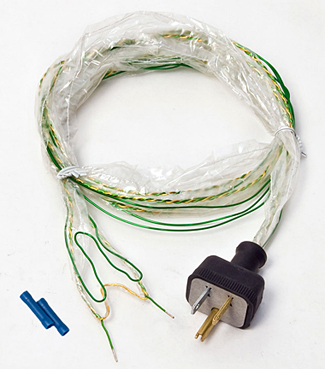
 Improving AC Noise, AC Cords and System Grounds
Improving AC Noise, AC Cords and System Grounds
• Never bundle speaker cables, interconnects, or AC power cables. Bundling creates serious grunge. If you must run wires parallel for more than a foot, separate them by 6" or more. Wires that cross at 45° or more can touch without any sonic degradation.
• You can’t believe the extra harshness, muddy bass, and grunge you hear due to home appliances feeding nasty high frequency hash into your house AC lines and then straight into your amp, preamp, CD player, etc. No power conditioner, no line filter, and no dedicated AC line stops this hash from “poisoning” your system. To really sweeten your sound, try turning off every fluorescent and halogen light in the house, as well as air conditioning, oil burner, electric stove, dimmer, and CD boombox. Unplug every surge protector, cell phone charger, digital TV, computer, and U.P.S. (because even when you turn them off, their “sleep” mode puts out almost as much hash as their on mode).
• Power cord quality has a major effect on PC, DVD, and server sound and visuals; it has a huge effect on flat screen displays. At a minimum, strip any outer insulating jacket off the AC cord and separate the wires inside by at least 6”. For much larger AC upgrades, see our power cords.
• If you use power strips, use only ones with no surge or overload protection, no on-off switch, and no neon/LED lights. Each of these features audibly degrades sound.
• Most stereos have too many grounds—every 3-prong plug is a ground. Less grounds improve hum AND sonics. Either one ground per system (at the preamp or amp) or none is best. Remove one ground at a time and listen. Use a hardware store cheater plug; attach a 6" wire to the ground lug. Lock the wire’s other end to the hole in the middle of a Radio Shack banana plug [#274-721, plastic shell removed]. Plug each component's AC cord into its outlet via the 2-prong cheater. Plug the banana into the same outlet’s round ground hole. Listen with the banana in, then out. If out is better, eliminate this ground by clipping the cord's ground pin or by leaving the cheater in place (cheaters always hurt sound a little).
• Nearly 50% of components have the wrong AC polarity. Use an unpolarized cheater plug (unpolarize the plug by snipping or filing the wider prong) to turn each component's AC plug in its outlet. Listen both ways. One way will sound noticeably more transparent than the other.
• For any separate power supply: listen, then physically turn the box 90°, turn another 90°, etc. One of the four positions will sound way better (due to the transformer's non-uniform magnetic leakage field). In addition, the separate power supply is even more vibration-sensitive than the component it supplies; click here.
